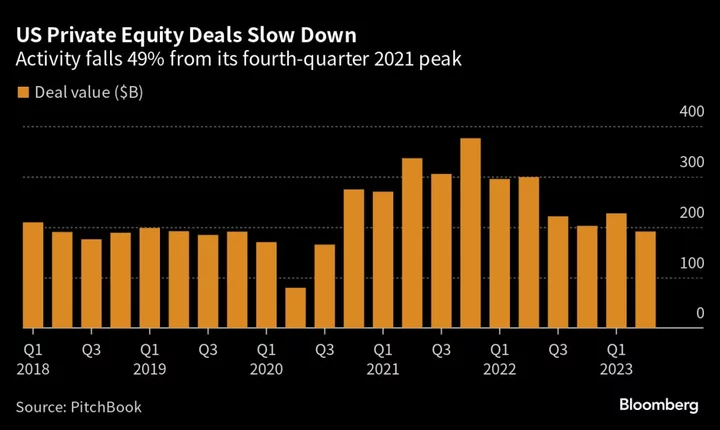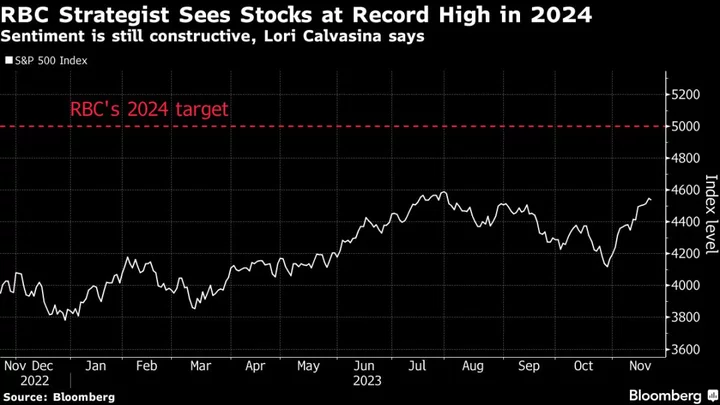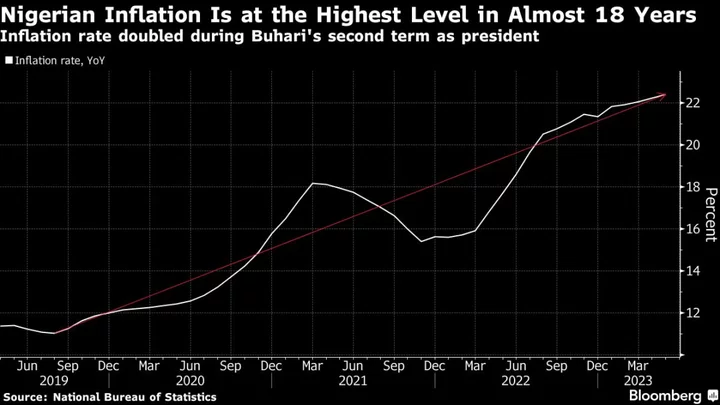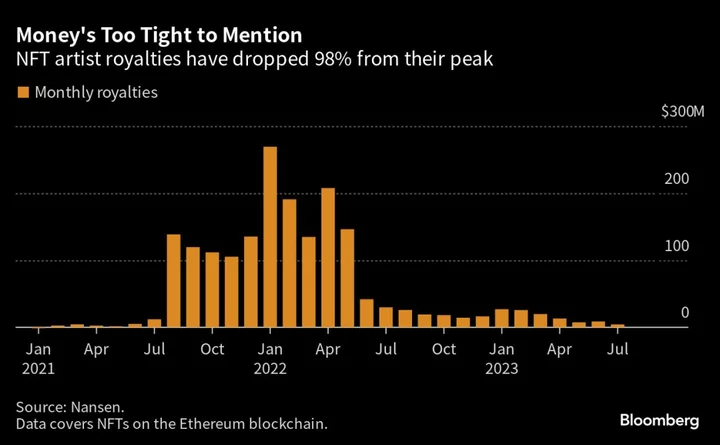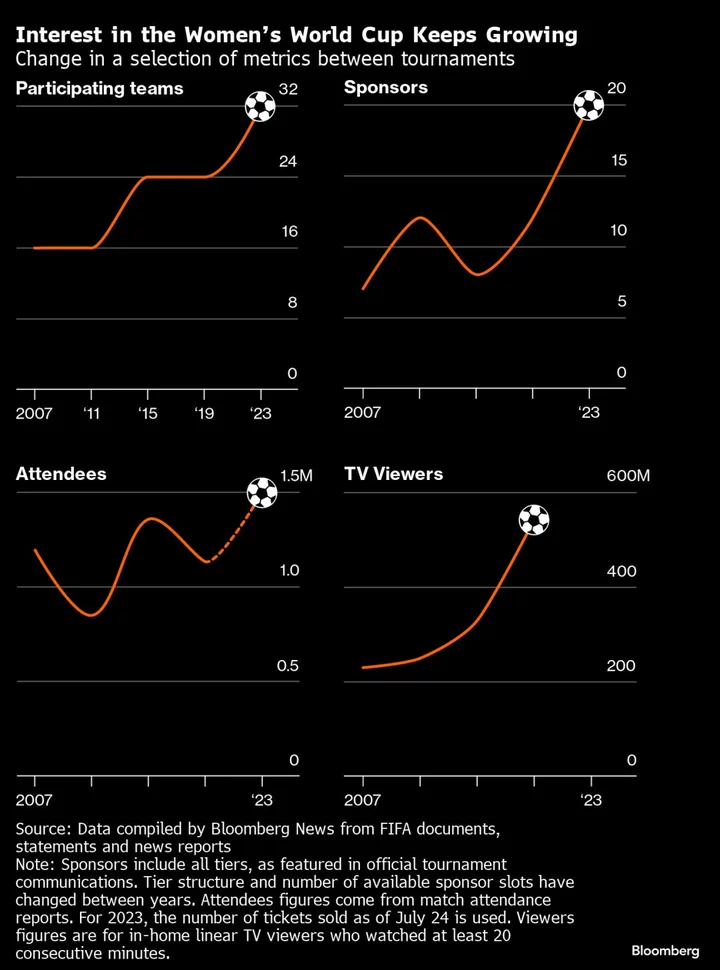For years private equity firms had a simple way to keep investors happy: sell assets and share the proceeds. As the golden era of easy dealmaking and cheap debt ends, they’re having to get more creative.
Private equity deal volumes have almost halved in the US since the end of 2021, according to PitchBook, and buyout groups are scrambling to extend the life of investments and maintain the flow of money to their backers.
With the cash paid out to investors from selling assets falling 67% from its second-quarter 2021 peak, firms are hunting for other options. Executives at one financial advisory firm, who asked not to be identified discussing confidential matters, said the firm has been flooded with calls from funds asking about strategies that might prop up returns and capital.
An active secondary market for private equity assets and the recent surge in nonbank financing have opened new escape routes for the industry — particularly for middle-market private equity shops.
“There’s a lot they can do before they have to admit defeat to their investors,” said Ludovic Phalippou, professor of financial economics at Oxford University’s Said Business School.
But some of these maneuvers come with their own challenges.
The trend for so-called continuation funds, which let firms extend the ownership period for assets, has failed so far to win over many existing investors. Bundling up stakes of private equity-owned companies into “collateralized fund obligations” has drawn scrutiny from US insurance regulators. Another fundraising tactic involves using portfolios of companies as collateral for loans, but those come with relatively high interest rates.
Other firms opt to sell partial stakes of companies to generate some cash for investors until a better mergers and acquisitions environment comes along. That route, however, can complicate the company’s eventual full sale.
Still, the industry has little choice but to try these novel approaches. Firms are struggling to raise capital as institutions, particularly pensions, remain over-allocated to private equity after last year’s market volatility. Private equity fundraising in the first half of 2023 tracked 15%-25% below the first half last year, according to PitchBook.
Geopolitical uncertainty, recession fears and skyrocketing borrowing costs at portfolio companies add pressure to an asset class that seemed unstoppable in 2021.
Investors, known as limited partners, have started to pay close attention to the “distributed to paid-in capital” metric, a measure of how much they’ve received from a fund relative to the amount they put in, according to Andrea Auerbach, head of global private investments at Cambridge Associates.
“For the last decade, there’s been more money given back to LPs than has been called in aggregate,” she said. “So all the LPs have become accustomed to ‘Where’s my money?’”
Private equity firms are turning to four main ways to satisfy these demands: continuation funds, minority sales, net asset value loans and collateralized fund obligations.
Continuation Funds
Continuation funds appeal to private equity because they let firms extend the ownership of assets that aren’t ready for sale, or that won’t get the best price in a depressed market, said Tim Clark, co-head of law firm Mayer Brown’s private funds practice.
The strategy is, however, controversial among investors because the firm is both buyer and seller, creating a possible conflict of interest.
Typically a firm selects one or more assets to move into a dedicated continuation fund, giving existing investors the option to roll their stake into the new vehicle. The firm also brings in new “secondary” investors who can buy out backers who’d rather sell. Most limited partners opt to cash out, according to Clark.
Calera Capital closed a $750 million continuation fund in June to extend ownership of a laundry services business for the health care industry. In May, Insight Partners closed a $1.3 billion continuation fund to buy stakes in various software companies from six of its existing funds.
But even continuation funds ran into challenges in the first half of 2023 as investors preferred other secondary-market transactions and only the best deals got done, according to Evercore. Sponsor-led secondaries deal volume, which includes continuation funds, fell about 41% in the first half of 2023 compared to the previous year.
The trade body for institutional investors in private equity issued recommendations on reducing conflicts of interest in these deals, including giving limited partners at least 20 business days to decide whether to participate, and getting an independent valuation for assets. But those measures may not be enough to ease the concerns of every limited partner.
“Everything that’s new is suspect,” Clark said. “I wouldn’t say LPs have gotten meaningfully comfortable.”
Read more: Private Equity Fees at Risk as Continuation Funds Lose Luster
Minority Sales
Private equity sponsors are also increasingly selling minority ownership in portfolio companies, rather than pursuing a full sale. BC Partners recently sold a minority stake in PetSmart, the pet retail chain, to Apollo Global Management Inc.
Minority sales allow the firm to generate some return to investors while retaining control of the asset. Crucially, a minority sale lets the sponsor keep existing financing in place because it doesn’t trigger a change-of-control under the debt documents, according to Kevin Schmidt, co-head of law firm Debevoise & Plimpton’s private equity practice.
“The refinancing market for portfolio companies is often less attractive,” Schmidt said. “Selling a piece, taking money off the table and keeping the portfolio company still as something controlled and riding the upside is definitely one possibility.”
Minority sales can be complex due to governance issues and expectations around the sponsor’s eventual full sale of the portfolio company, Schmidt said. The new investor may also want to limit the sponsor’s ability to trigger a sale of the portfolio company for some period at a lower valuation than the purchaser’s initial investment, he said.
NAV Loans
Firms have ramped up their use of net asset value financing to shore up capital, fund payouts to limited partners and make new investments. The loans, financed against the value of a particular fund, let firms borrow using portfolio companies as collateral.
“There’s been a significant increase in demand for NAV financing,” says Augustin Duhamel, managing partner at 17Capital, whose firm is positioning itself to take advantage. “Private equity managers and investors are using it to either finance growth in their portfolios or to help bridge the ‘liquidity gap’ and avoid selling portfolio companies or LP positions in a heavily discounted market.”
Read More: Private Equity Funds Tap Exotic Loans for Liquidity as Deals Ebb
That extra money will come at a cost. Most NAV lenders arrange loans on a floating-rate basis, another blow for debt-laden borrowers having to shoulder rising financing costs. Those rates also tend to be between 550 and 700 basis points over base rates, according to industry experts. The deals have loan-to-value ratios of up to 30% and a maturity of three to five years.
“Fund managers are now borrowing money on their investors’ behalf in order to give them their money back,” Said Business School’s Phalippou said. “These loans are at a rate of 6% plus the base rate or higher — enjoy.”
17Capital, owned by Oaktree Capital Management, is raising about $10 billion across two new funds to service private equity’s extra needs.
Read more: Oaktree’s 17Capital Seeks $10 Billion to Finance Buyout Funds
Fund Securitization
In another sign of how global market turmoil is pushing private equity to take more esoteric risks — and pumping yet more leverage into the system — the industry is boosting its use of fund securitization.
Collateralized fund obligations bundle stakes in funds holding private equity-owned companies and package them into one security, while slicing portions into risk categories, from senior to equity tranches. Cash flows from the companies are used to make interest payments to investors. Some of the leftovers pay returns on the equity tranche, which takes the first loss if investments sour. Even though it’s the riskiest portion, the equity layer has lucrative returns in the mid-20% range, according to market participants.
US insurers are among the biggest CFO buyers, but their appetite is waning as the threat of a regulatory crackdown looms, and they’re becoming less inclined to take the equity tranche.
“This means placing the entire instrument is more challenging,” Roger Li, managing director and co-head of GP Advisory at Briarcliffe Credit Partners, told Bloomberg in a phone interview. “Regulators and insurers are both wanting less lead and more gold.”
(Updates with additional data in ninth paragraph)
Author: Allison McNeely, Laura Benitez and Silas Brown

